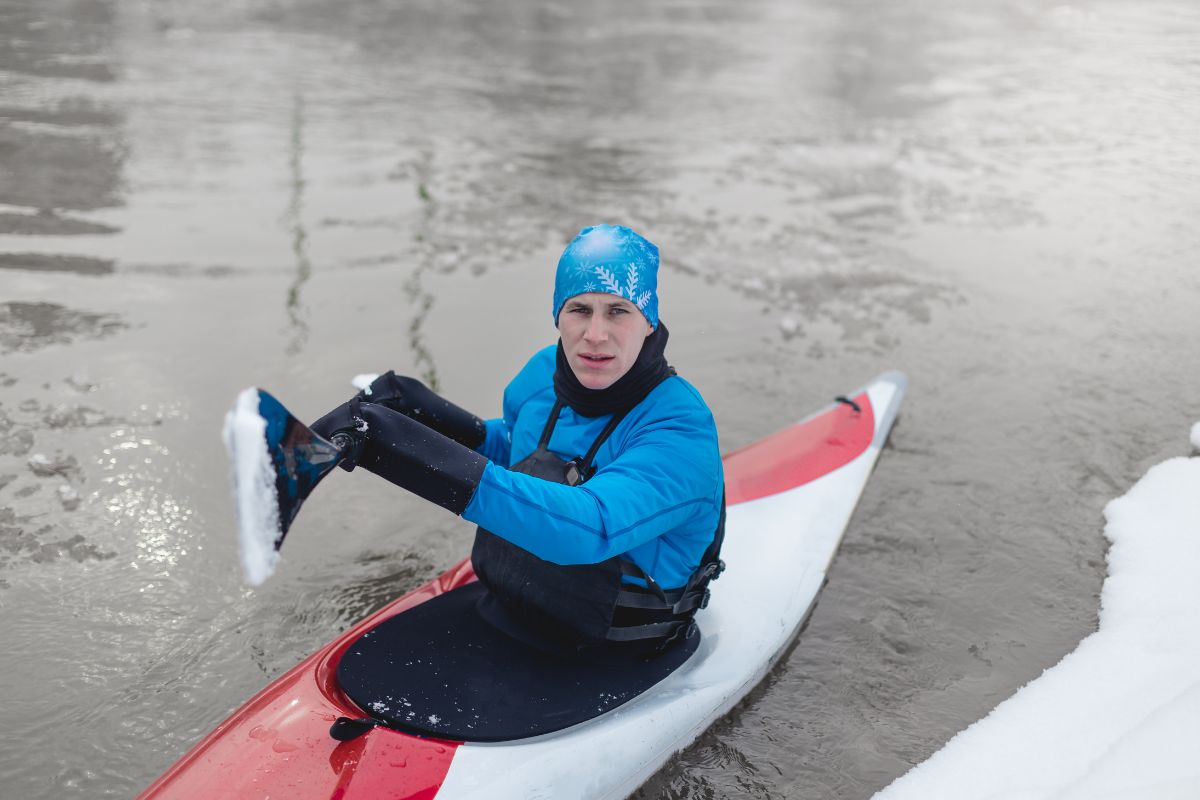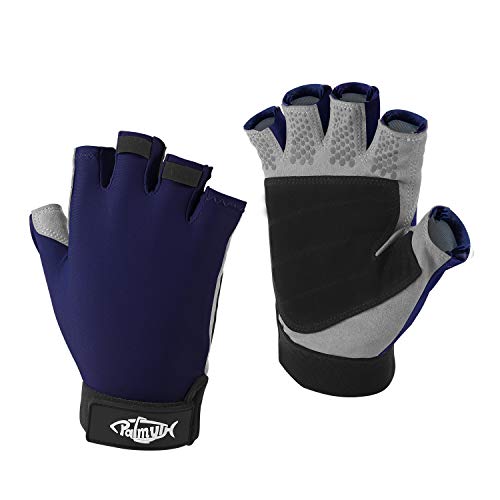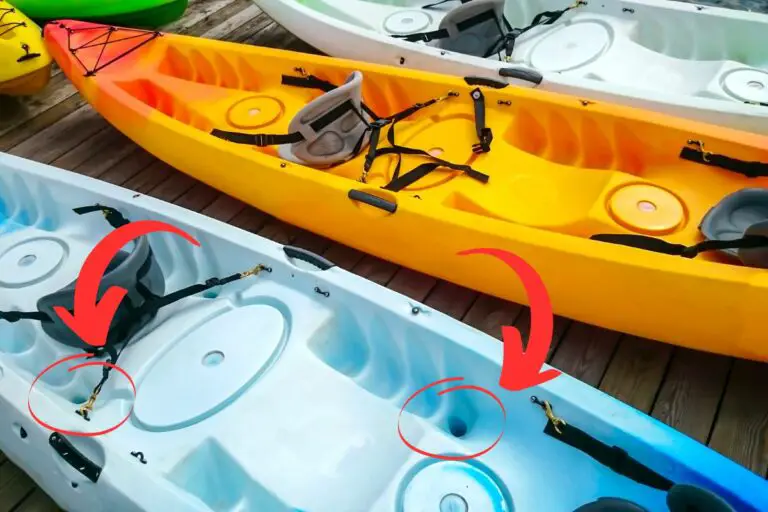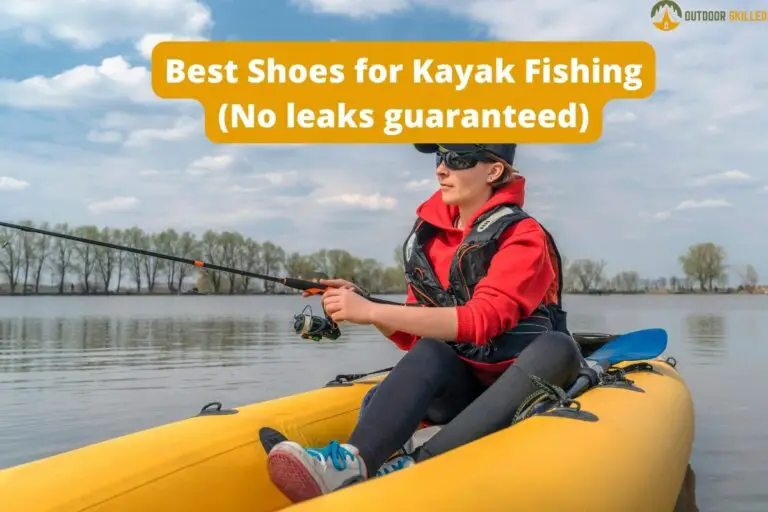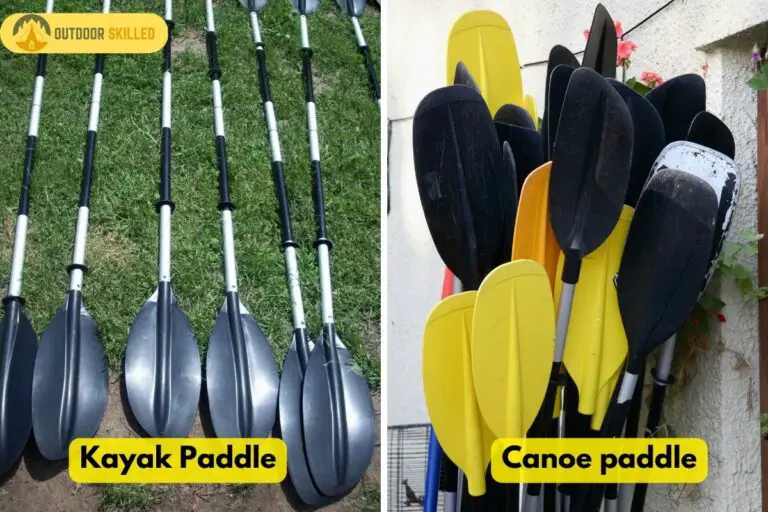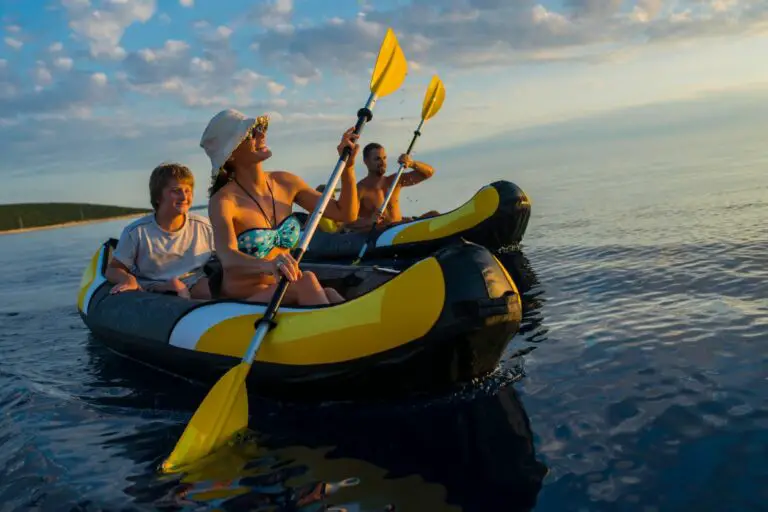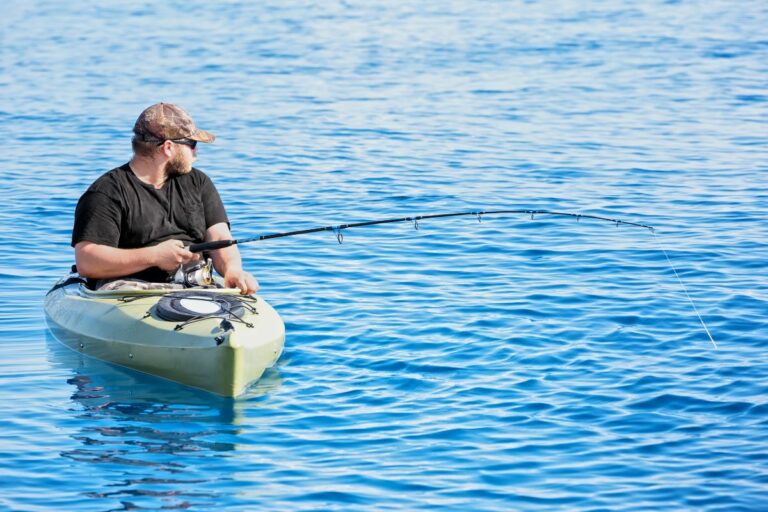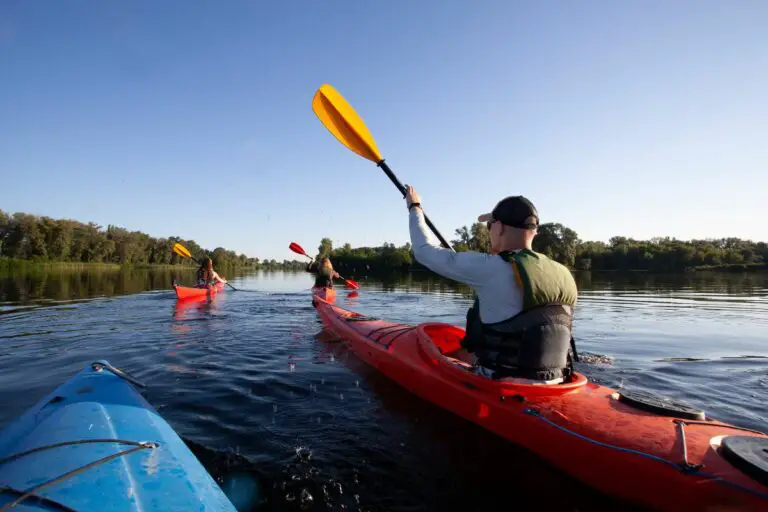When Is It Too Cold to Kayak? 10 Tips to Kayak Safely in The Cold
So, you fancy yourself a kayaking enthusiast, huh? You’re not afraid of a little chilly weather, are you? Well, think again, my friend.
While your adventurous spirit is admirable, even the most experienced kayakers need to know when to draw the line.
So, when is it too cold to kayak?
It’s too cold to kayak when the water and air temperatures drop below 60°F due to the increased risk of hypothermia. It’s highly advised not to kayak when it’s too cold without wearing appropriate clothing and taking precautions to stay warm and dry.
There’s a bit more to it, of course. So, buckle up and get ready to find out, because we’re about to break it down for you…
Table of Contents
How Does the Temperature Affect Kayaking?
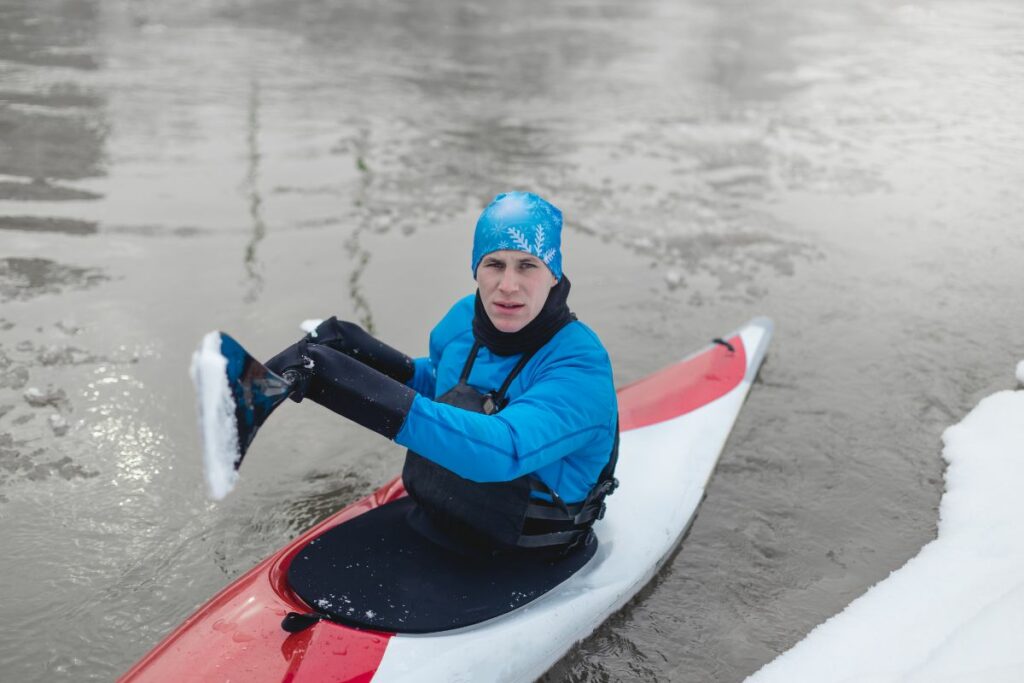
As explained in my guide to kayaking in cold winters, you can definitely go kayaking when it gets chilly, but you must know what you’re up against and how to be ready.
Water and air Temperatures are important factors to consider when kayaking, as they can affect your comfort, safety, and overall performance.
Here’s how:
- Comfort: Air temperature can affect your comfort level while kayaking.
- If it’s very hot, you may become overheated and dehydrated; if it’s very cold, you may feel uncomfortable and stiff.
- Safety: Cold water can be dangerous for Kayakers, even in relatively warm air temperatures.
- If you capsize in cold water, the shock of the cold water can cause hyperventilation and make it difficult to swim or even think clearly.
- Prolonged exposure to cold water can also lead to potentially life-threatening hypothermia.
- Performance: Temperature can also affect your kayaking performance.
- Cold water is normally denser than warm water, which can make paddling more difficult. So, if you’re kayaking in colder water, you may need to adjust your technique to account for the increased resistance.
- Additionally, if you’re paddling in very hot or humid conditions, you may become fatigued more quickly.
Overall, it’s important to check the weather forecast before heading out on a kayaking trip so you can be aware of the temperature and how it may affect your kayaking experience.
Remember that water temperature can be colder than the air temperature, especially in open water or areas with cold currents or upwellings. Therefore, it’s important to check both the water and temperatures.
Moreover, the water temperature can vary depending on the location. In some areas, water temperatures can remain cold even during the summer months, while in other areas, water temperatures may be warm enough for kayaking in the fall or winter.
When Is It Too Cold to Kayak?
If the water temperature is below 60°F and the air temperature is below 50°F, it is generally considered too cold to kayak without taking precautions and wearing appropriate clothing.
Kayaking at these temperatures will increase the risk of hypothermia significantly, and even a brief immersion in cold water can be life-threatening. It can also reduce dexterity and affect your coordination, making it harder to control the kayak and perform rescues.
What Temperature Is Ideal for Kayaking?

Generally, most kayakers prefer water and air temperatures between 60°F and 80°F. These temperatures are comfortable for paddling and allow kayakers to enjoy the water without feeling too hot or too cold.
However, the ideal temperature for kayaking can vary depending on personal preference and experience level. For instance, experienced kayakers may enjoy paddling in cooler temperatures, provided they are wearing appropriate clothing to stay warm.
10 Tips to Stay Safe When Kayaking in Cold Temperatures
You can safely go kayaking when it’s cold as long as you wear weather-appropriate clothing and take proper precautions to stay warm and safe.
Here is what you need (I’ll explain why in the list after):
Here are some tips to ensure that you kayak safely when it’s cold:
- Always wear a Personal flotation device (PFD): A PFD designed for cold water paddling will help you stay afloat in case you fall into the water and provide insulation to help keep you warm.
- Dress appropriately: Dressing in layers is key to staying warm while kayaking in cold weather.
- Start with a moisture-wicking base layer that will keep sweat away from your skin.
- Add a mid-layer for insulation, such as a fleece or wool sweater, and a waterproof outer layer to keep out wind and water.
- Wear waterproof shoes, a hat, and gloves to keep your extremities warm.
- Avoid cotton clothing as it retains moisture and can make you feel colder.
- Bring extra layers of clothes in case you get accidentally wet or need more insulation.
- Stay dry: Try to stay as dry as possible during your kayaking trip. If you get wet, make sure to change into dry clothing as soon as possible.
- Bring essential emergency equipment: Bring a first aid kit, a whistle, a flare, and a waterproof map and compass.
- Increase your visibility: In cold weather, it gets dark earlier, and it can be more challenging for other boaters to see you. So, try to make yourself more visible by wearing bright or reflective clothing, and consider using a light or strobe.
- Stay hydrated and nourished: It can be easy to forget to drink and eat while kayaking in cold weather, but it is important to stay hydrated and nourished. So, make sure to bring a thermos with a hot drink and some high-energy snacks like nuts and dried fruit to keep your energy levels up.
- Bring a dry bag: Bring a dry bag to store extra clothing, food, and other gear. This will ensure that your gear stays dry and you have a backup if you get wet.
- Plan your route: Plan your route in advance to familiarize yourself with the area and avoid areas that have strong currents or ice formations.
- Stay close to shore: Avoid paddling too far from shore, as the risk of hypothermia increases the further you are from land.
- Don’t paddle alone: Kayaking in pairs is safer than paddling alone, especially in cold weather. If one of you capsizes, the other can provide assistance and help warm them up.
By following these tips, you can stay safe and comfortable while kayaking in cold weather. But remember, always prioritize safety over adventure, and don’t push yourself too hard or take unnecessary risks.
Kayak your way to Freedom
- On a budget? Check out the best fishing kayaks under $500 here and the best Fishing Kayaks under $1,000 here. Or Check the best Cheap Kayaks here.
- Going fishing? Here are the best Ocean fishing kayaks, and here are the best River Fishing Kayaks.
- You can also find the best Fly Fishing Kayaks here and the best Bass Fishing Boats here.
- A bit experienced? Check out the best modular kayaks here and the best tandem fishing kayaks here.
- Looking for something special? Check out my favorite Ducky kayaks here.
- Navigate your way with these awesome and beginner-friendly Kayak compasses.
- Going Hunting? These Duck hunting kayaks will give you an unfair advantage!
- Have a need for speed? These motorized kayaks will get you moving.
- Protect yourself from the sun with these Kayak shades, and make your kayak more comfortable with these Kayak seats.
- Keep your feet dry and warm with these superb Kayaking shoes.
- Going Kayaking in cold water? Stay warm with these Kayaking gloves.
- Paddle Less, Fish More with the Best Kayak Motors
- Looking to get a trolling motor on your kayak? Check out the best kayak trolling motor mounts here.
If you like this article, please share it or pin it, you can find the share buttons below. We will really appreciate it ❤️

